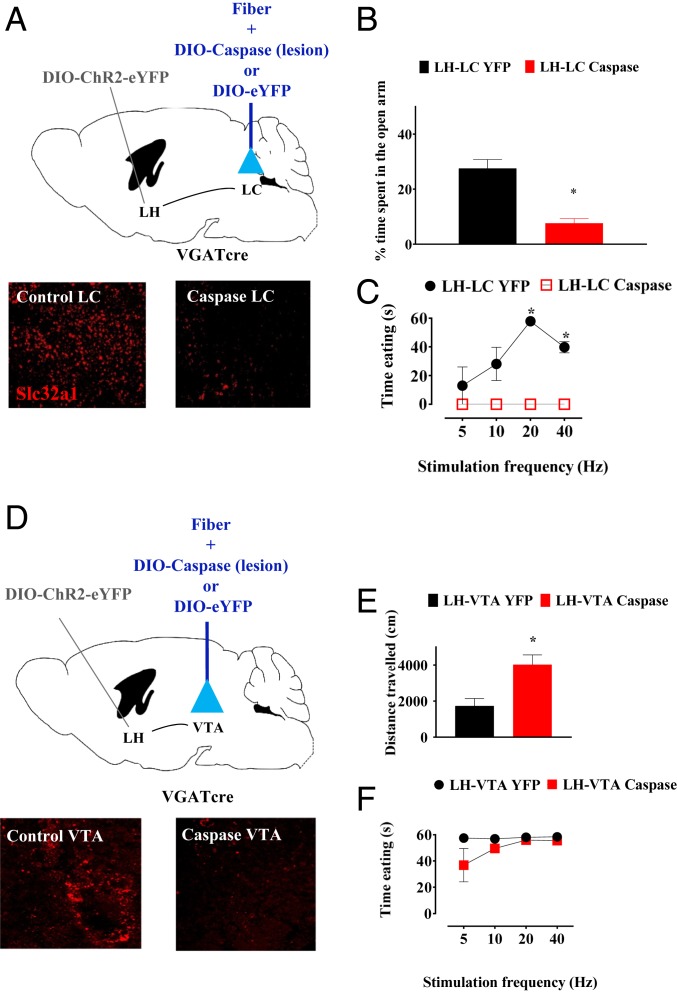Fig. 3.
Lesion of peri-LC GABA neurons inhibits eating elicited by LH-LC stimulation, while lesion of VTA GABA neurons does not have an effect on the latency to eat evoked by LH-VTA stimulation. (A) VGAT LH-ChR2/LC-cre–inducible caspase/YFP circuit target. Representative image of Slc32a1 expression (red) (magnification: 10×). (B) Cre-inducible lesion of peri-LC GABA neurons results in a significant decrease of time spent in the open arm of an elevated plus-maze. (C) Photostimulation VGAT LH-ChR2/LC-cre–inducible caspase does not produce eating, with a significant effect of the Caspase virus. Open shapes indicate conditions in which no eating was observed. (D) VGAT LH-ChR2/VTA-cre–inducible caspase/YFP circuit target. Representative image of Slc32a1 expression (red) (magnification: 10×). (E) Cre-inducible lesion of VTA GABA neurons increases basal locomotor activity. (F) Photostimulation VGAT LH-ChR2/VTA-cre–inducible caspase produces eating without any significative difference when compared with the VGAT LH-ChR2/VTA-YFP control. *P < 0.05 t test (B and E) or post hoc comparison of YFP control vs. caspase lesion (C).

